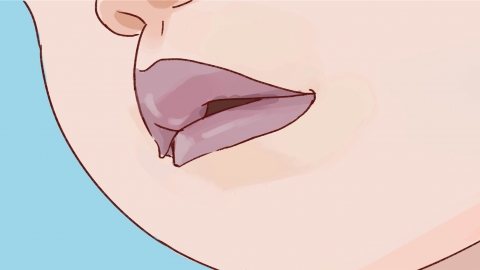What are the possible causes of purple lips?
In general, purple lips may be caused by cold exposure, excessive fatigue, methemoglobinemia, chronic obstructive pulmonary disease (COPD), or congenital heart disease. It is recommended to seek medical attention promptly and receive treatment under a physician's guidance. Detailed explanations are as follows:

1. Cold Exposure
When the body is exposed to cold environments, the surface blood vessels reflexively constrict to reduce heat loss, resulting in poor circulation and potentially causing the lips to turn purple. It is recommended to dress appropriately according to temperature changes, keep warm, wear scarves and masks when going outdoors in cold weather, and reduce the impact of cold on the body.
2. Excessive Fatigue
Prolonged overexertion places the body in a state of stress, increasing metabolism and oxygen consumption. At the same time, the efficiency of blood circulation and oxygen delivery may decrease, leading to tissue hypoxia in areas such as the lips, which can cause them to turn purple. It is important to maintain a reasonable routine in daily life, avoid prolonged continuous work or strenuous exercise, and ensure adequate rest and sleep.
3. Methemoglobinemia
Methemoglobinemia may occur after accidental ingestion of substances containing oxidizing agents such as nitrites, leading to the oxidation of ferrous iron in hemoglobin to ferric iron, forming methemoglobin and causing the lips to turn purple. It may also be accompanied by symptoms such as dizziness, fatigue, and difficulty breathing. Under medical guidance, medications such as methylene blue injection, vitamin C tablets, and calcium folinate for injection can be used for treatment.
4. Chronic Obstructive Pulmonary Disease
Chronic obstructive pulmonary disease is often caused by long-term smoking, air pollution, occupational dust exposure, and other factors. This disease leads to chronic inflammation and narrowing of the airways, impairing gas exchange. Ventilation and gas exchange dysfunction in the lungs result in insufficient oxygen intake, which can cause the lips to turn purple. It may also be accompanied by symptoms such as coughing, sputum production, and wheezing. Medications such as salbutamol aerosol, aminophylline tablets, and budesonide suspension for inhalation should be used as directed by a physician to alleviate symptoms.
5. Congenital Heart Disease
Congenital heart disease may result from abnormal heart development during the fetal period. An atrial septal defect causes blood shunting between the left and right atria, allowing venous blood to mix with arterial blood, thereby reducing the oxygen content of arterial blood and causing the lips to turn purple. Other symptoms may include delayed growth and development, reduced exercise tolerance, and susceptibility to respiratory infections. Under medical guidance, an atrial septal defect repair procedure can be performed, in which the defect in the atrial septum is closed using a patch or direct suturing to restore normal separation between the left and right atria, prevent blood shunting at the atrial level, correct abnormal hemodynamics, and improve cardiac function.
It is recommended to undergo regular physical examinations to detect health problems promptly. Additionally, maintaining a healthy living environment, such as ensuring good indoor ventilation and avoiding exposure to toxic or harmful substances, is important.










